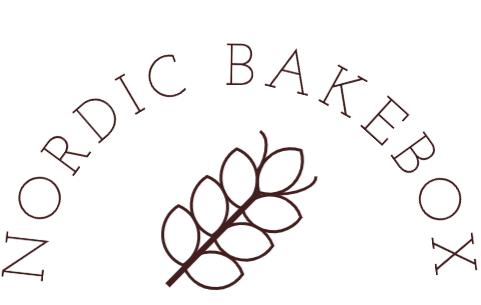USE CODE: FREEBAKEBOX AND GET YOUR FIRST BOX FOR FREE WHEN SIGNING UP TO A 3, 6 OR 12 MONTH PLAN. OFFER ENDS 28 FEB!

FINNISH RYE BREAD
Rye holds a longstanding significance as a symbol of resilience in Finland. It used to be an important part of a meal to keep the wrokers full when working all day in the fields or forrest, Rye bread embodies the essence of Finnish cuisine and stands as the nation's culinary emblem. Known locally as 'Ruisleipä,' Finnish rye bread is a cornerstone of Finnish gastronomy, renowned for its robust texture and earthy taste.
Crafted predominantly from rye flour and seasoned subtly with cumin. Sliced thinly, it serves as an ideal canvas for open-faced sandwiches or pairs effortlessly with butter and fine cheese. Finnish rye bread epitomizes a culinary heritage passed down through generations,
1. MIX THE PRE-DOUGH
Day 1: In a large bowl, combine the 420ml lukewarm water and the dehydrated sourdough starter from bag e and stirr until dissolved. Then add the rye flour from bag g an use a danish dough whisk or a wooden spoon to mix until well combined. The mixture will be thick, more like a mass than a batter. Cover the bowl with plastic wrap and let it rest at room temperature (24°C) for 24 hours.Boil the rye berries from bag g in 600ml of water for 25min and remove from heat. Drain the rye berries and let them cool.

2.MIX THE MAIN DOUGH
Day 2: Dissolve the yeast from bag a in 370ml lukewarm water in a separate bowl. When it is completely mixed pour it over the pre-dough from day before. Add bag i mix the ingredients together using a mixer.
3. KNEAD THE DOUGH
Mix on low speed for about 10 minutes until the dough comes together. If mixing by hand, keep a bowl of water next to you and frequently dip your hands in the water to keep the dough from sticking to your hands. Because of the high rye content, this dough will be very sticky and a looser then a traditional wheat dough. Cover the bowl and let the dough rest for 50 minutes at room temperature.
4. DIVDE DOUGH IN TWO
Flour a clean work surface with some flour from bag f. Divide the dough into two equal parts. Shape each dough into a round ball by cupping the dough with your hands and pulling it towards you, then in a circular movement push it away from you. Repeat this circular movement until they have become round balls.
5. LET THE LOAVES REST & RISE
Roll each ball in flour on the bench and place the shaped loaves onto a baking tray covered with baking paper. Preheat the oven to 250°C. Then let the loaves proof for 50 minutes at room temperature. They may spread out a bit during this time and they should crack up a bit, which is the traditional look of this bread.
6. IF IT IS A COLD DAY
Put the loaves in a cold oven, then place a cup of boiling water in the bottom of the oven and close the oven. This creates a little steam room for your loaves and will make them rise faster.
7. BAKE YOUR BREAD
After proofing bake the breads at 250°C for 25 minutes. Then reduce the oven temperature to 180°C and continue baking for an additional 25 minutes until the crust is golden brown.
8. IS THE BREAD DONE?
The loaves should reach an internal temperature of 98°C when they are fully baked. In case you lack a thermometer to gauge the bread's inner temperature, a simple alternative is to gently tap the bottom of the loaves. If they emit a hollow sound, it indicates they are ready. Once the loaves have completed baking, Remove from the oven and let cool then wrap them up. The bread is best the next day and should be eaten in very thin slices. Enjoy! Now, savour the delight of your homemade bread!















